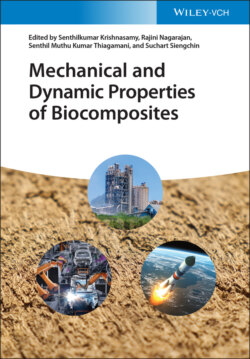Читать книгу Mechanical and Dynamic Properties of Biocomposites - Группа авторов - Страница 25
1.4.1.10 Sisal/Roselle and Sisal/Silk FRP Hybrid Composites
ОглавлениеSisal (Agave sisalana), from the Agavaceae family, is a hard‐fiber plant with wide cultivation in the tropical countries of Africa, America, and Asia, though it has its origin in Mexico and Central America. Their fibers are strong and tough, and extracted from sisal plant leaves. Sisal fibers are widely utilized in composites and plastic/paper industries. The nativity of roselle (Hibiscus sabdariffa) can be traced to West Africa. It is a species of Hibiscus, whose plant is naturally abundant and majorly used for fruits and bast fibers. Roselle fibers have extensive applications in the textile industry and in composites, because they exhibit greater mechanical behaviors in comparison with some other naturally occurring fibers, such as jute and kenaf.
Moreover, Athijayamani et al. [42] used a fiber ratio of 1 : 1 for the sisal and roselle fibers and investigated, under wet conditions, how absorption of moisture affected the mechanical responses of short hybrid sisal/roselle FRP unsaturated polyester composites. Using different fiber contents and lengths, their results showed an improvement (increase) in the flexural and tensile strengths of the hybrid composites of sisal/roselle fibers at increased lengths and contents of fibers and under dry condition. For the wet condition, the strengths (tensile and flexural) were significantly reduced, while inverse proportionality between the impact strength and fiber length and content was observed for both conditions (wet and dry), as depicted in Table 1.8. In addition, Noorunnisa Khanam et al. [43] also carried out a study on sisal/silk fiber ratio of 1 : 1 and prepared a polyester‐based hybrid composite to evaluate various fiber lengths. Their results showed higher mechanical (tensile, flexural, and compressive) responses from the composite sample with fiber length of 20 mm than that of 10 and 30 mm counterpart hybrid composites (Table 1.8). Also, the results obtained after fiber modification depicted that the same mechanical behaviors of the alkali‐treated hybrid fiber composites improved significantly.
